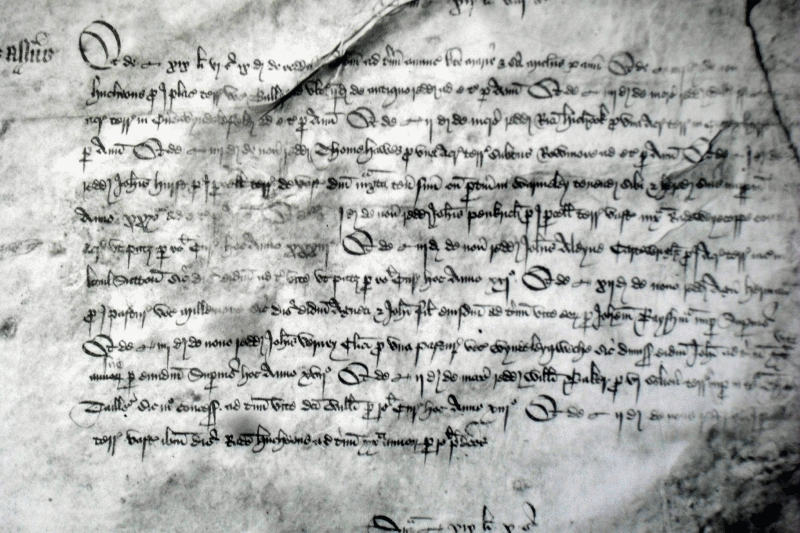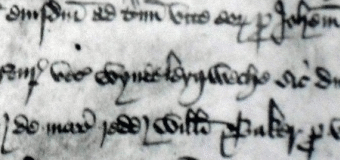The Bailiff of Sutton Coldfield presented an account of income and expenditure to the Lord of the Manor every year until 1528, when Sutton became a self-governing town. John Bailly held the office of bailiff in 1480, and his detailed account for that year survives. Many places in Sutton are mentioned by name, some of the names being still in use today, but most of them have long been forgotten. For example, twenty pence was received in rent for a toft with some land called Harisortumore - a toft is a house platform, the site of a demolished building, but the location of Harisortumore is not known - will more research reveal it?
Does anyone now remember the location of Ballefield, Rowmore, Repecroft, or Blowen? The names of buildings mentioned in the account are also lost in the mists of time - The Bere was probably an inn called the Bear (the rent was £2), Ferrours (also spelt Ferroce) may have been a cottage with a smithy, Lynchiok was perhaps near an oak tree, while the name of another property, Gasethyng gives no clue, although it was an important dwelling.
Mullemore is a descriptive name meaning heathland by a mill, but a whole district of Sutton was called More, where Moor Hall is now. The tenant of Mullemore (Millemore in an earlier document) was Agnes Hardman or Harman, probably a relative of Bishop Vesey who was born at Moor Hall and whose name was originally John Harman - was there a windmill near Moor Hall? Overwynnemylsfelde seemed to refer to a windmill until I came across an earlier reference to it as Overwindelefeld, (over Windele feld) a field above Wyndley.
Other descriptive names are easier to interpret - Reddeweycoppes (Reddicap) is the summit of the Red Way, while Quarreyfield, near Maney, and Hawkenest, now Falcon Lodge, speak for themselves. Wynleywith did not appear to be descriptive until it appeared in an earlier bailiff’s account of 1433 as Wyndeleyqweche, which corresponds to the eighteenth century Windley Quadge, swampy ground near Wyndley Pool.
Patymore is now Peddimore, but the reference is Erlesmede alias Patymore, suggesting that the field shown on old maps as “the Lord’s Meadow”, earlier known as the Earl’s Mead, is the original location of Peddimore. Also mentioned are Knolles (probably Langley Knowles), Wyggenhullemede (Wigginshill meadow), and an acre of land in Litill Sutton Field. Richard Dye had a toft on the Coldfield called Spetelles.
Most of these names also occur in Bailiff Robert Kelynge’s account for 1433, so the successive bailiffs must have compiled their account by copying out the account for the previous year, adding anything new - so each year there was the possibility of mistakes in copying, the original names gradually being corrupted.

